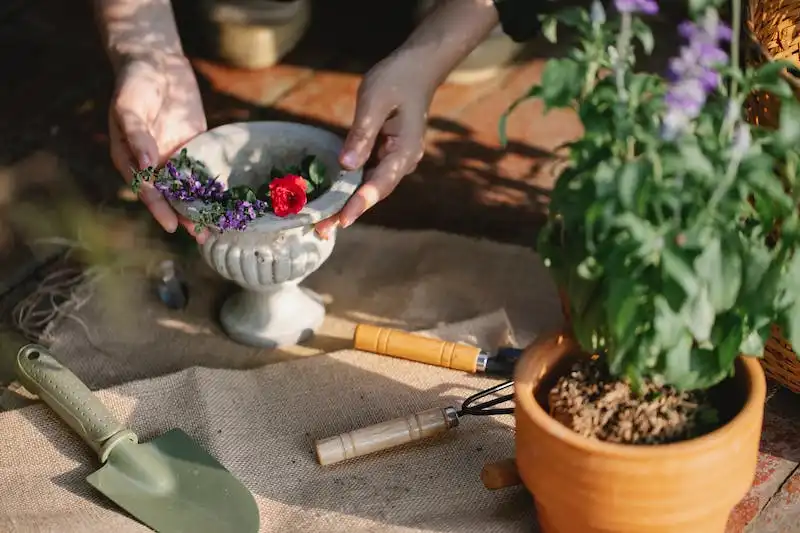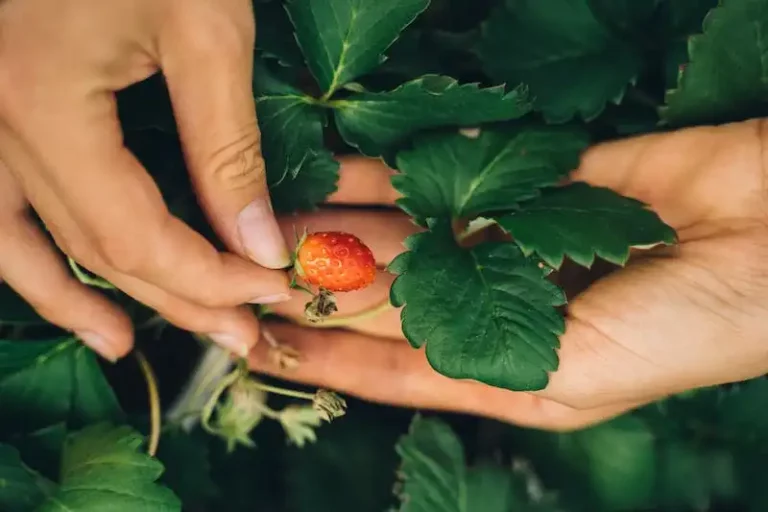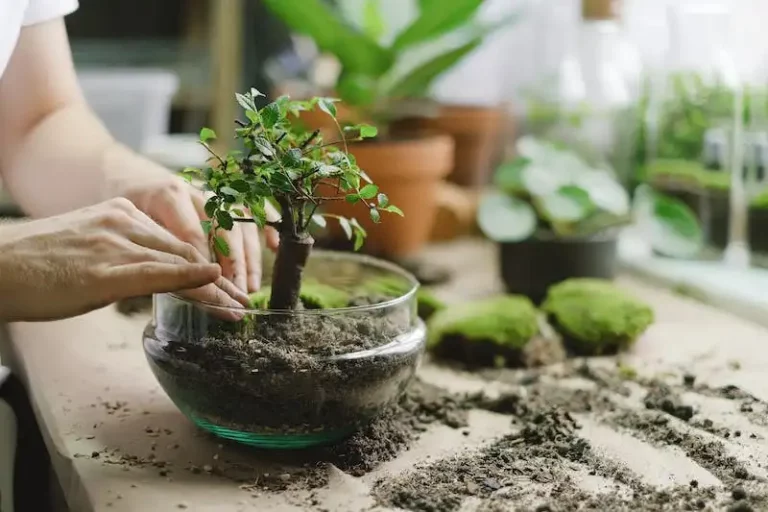French beans, also known as filet beans or haricots verts, are a versatile and highly nutritious legume that is a favorite among gardeners and chefs alike. These beans are not only easy to grow, but they also offer a wide range of culinary possibilities. In this article, we will look at the different types of French beans, their growing requirements, and some tips on how to care for them.
French beans are a warm-season crop that is typically planted outdoors once the frost has passed. They thrive in areas with full sun, well-drained soil, and a pH level between 6 and 7. To get started, soak the seeds overnight and plant them 2 inches deep and 4 inches apart in rows that are 18 inches apart. It is important to provide supports for the beans to climb, as this helps to maximize space and decrease the chance of diseases.
When growing French beans, it is essential to provide them with adequate water. They should be watered regularly, but be careful not to overwater as this can cause the plants to become waterlogged and prone to diseases. Additionally, providing a layer of compost around the plants can help retain moisture in the soil and provide beneficial nutrients as the compost breaks down.
French beans require very little care once they are planted. However, it is important to keep an eye out for common pests such as aphids, slugs, and bean beetles. If you see any signs of these pests, you can use biological controls or organic insecticides to get rid of them. Additionally, be sure to remove any weeds that may be growing around the plants, as these can compete for nutrients and water.
In terms of harvest, French beans can be picked when they are still young and tender, or left to mature and used as dried beans. The best time to harvest is when the pods are firm and crisp, but before they become tough and stringy. To harvest, simply snap off the beans from the plants using your fingers or a knife. It is important to harvest regularly to encourage continuous production.
FAQs about French Beans
Q: How long does it take for French beans to grow?
A: French beans typically take around 50 to 60 days to reach maturity.
Q: Can French beans be grown in containers?
A: Yes, French beans can be grown in containers as long as they have enough space for the roots to grow and proper support for climbing.
Q: Are there any specific tips for cooking French beans?
A: French beans are versatile and can be steamed, sautéed, or used in various recipes. Keep in mind that they cook quickly, so be careful not to overcook them.
French beans are a delicious and nutritious addition to any garden and kitchen. Give them a try this growing season and enjoy the benefits of growing your own fresh, pesticide-free beans!
Gardenate
Gardenate is a useful tool for gardeners who want to maximize their crop yield. It provides information on when to plant various vegetables, including French Beans. Gardenate helps to ensure that you have a successful gardening experience by providing guidelines for the right time to plant, along with helpful tips and advice.
When growing French Beans, think about the suitable weather conditions. They thrive in temperatures between 65°F and 75°F (18°C and 24°C). It is also important to consider the soil. French Beans prefer well-drained soil that is rich in organic matter, such as compost or manure.
Before planting, prepare the soil by removing any weeds and ensuring it is free from large clumps. When planting seedlings, make sure to space them about 4 inches (10 cm) apart. Be sure to water the seedlings regularly, especially during dry periods.
French Beans require regular care to promote healthy growth. Water them deeply once or twice a week, depending on the weather conditions. It is also important to weed regularly to control the growth of unwanted plants. Applying mulch around the plants helps to conserve moisture and prevent weeds from flourishing.
French Beans mature within 60 to 75 days. You can start harvesting them once the pods are about 4 to 6 inches (10 to 15 cm) long. Harvesting regularly encourages the plant to produce more pods.
Diseases and pests can pose a threat to your French Bean plants. Keep an eye out for signs of diseases such as fungal infections or pests like aphids. If necessary, apply an appropriate organic or biological control method to protect your plants.
French Beans can be a beneficial companion plant in the garden. They are particularly good companions for carrots, cucumbers, corn, and radishes. The beans enrich the soil with nitrogen, which helps the other plants to grow.
If you’re looking for more information on growing French Beans or other vegetables, Gardenate provides a wealth of resources. It offers detailed guidelines on planting, care, and harvesting. You can find tips on when and how to plant different crops, as well as information on their specific growing needs.
Thanks to Gardenate, you can enjoy a bountiful harvest of delicious and nutritious French Beans right from your own garden. Whether you’re a seasoned gardener or just starting out, Gardenate is an invaluable tool for successful vegetable gardening.
| Gardenate Guidelines |
|---|
| 1. Find the right time to plant French Beans. |
| 2. Prepare the soil by removing weeds and adding organic matter. |
| 3. Space seedlings 4 inches apart and water regularly. |
| 4. Provide regular care, including watering, weeding, and mulching. |
| 5. Harvest French Beans when the pods are 4 to 6 inches long. |
| 6. Watch for diseases and pests, and take appropriate measures to control them. |
| 7. Consider planting French Beans alongside compatible companion plants. |
| 8. Take advantage of the resources available on Gardenate for more information. |
Keep your garden growing – see what to plant right now
If you want to keep your garden thriving and productive, it’s important to know what to plant at different times of the year. Right now is a great time to plant French Beans, also called filet beans. These delicious vegetables are easy to grow and offer a bountiful harvest.
French Beans are suitable for growing in most spaces, whether you have a large garden or just a small plot of land. They’re often referred to as dwarf beans, as they don’t require much space to grow. However, they need plenty of light and well-drained soil, so make sure to choose a suitable spot in your garden.
When planting French Beans, it’s important to provide them with enough water and regular watering. They also benefit from the addition of well-rotted manure or compost to the soil. This will help to ensure that they have the nutrients they need to thrive.
French Beans are quite hardy and can withstand light frost. However, if you live in an area with frosty winters, it’s best to start your French Bean seedlings indoors and transplant them outside when the weather warms up.
To maximize the productivity of your French Bean plants, it’s important to take proper care of them. Regular weeding, proper watering, and applying mulch can help to keep the plants healthy and free from diseases. Be on the lookout for any signs of diseases or pests, and take appropriate action to prevent them from spreading.
One of the benefits of growing French Beans is that they are self-pollinating, so you don’t need to worry about attracting pollinators to your garden. However, if you want to encourage beneficial insects to visit your garden, you can plant flowers nearby to support the biological diversity.
When it comes to harvesting French Beans, it’s important to pick them when they’re young and tender. The beans should snap easily when bent and should not feel overly fibrous. To encourage continuous production, harvest the beans regularly and avoid leaving overripe pods on the plants.
French Beans can be stored in the refrigerator for up to a week. If you have a surplus, they can also be blanched and frozen for long-term storage. Whether you enjoy them steamed, sautéed, or added to your favorite recipes, French Beans are a versatile and nutritious addition to your garden and your plate.
If you’re thinking of growing French Beans in your garden, please refer to reputable gardening references for more detailed information and specific growing tips. Experienced gardeners or horticulturists can also provide valuable advice and guidance on growing French Beans.
By planting French Beans now, you can enjoy a bountiful harvest and keep your garden growing. So get your seeds, prepare your soil, and look forward to enjoying the sweet and delicious rewards of your hard work in no time!
Growing Beans – dwarf also French beans Bush beans
There are different types of beans that you can grow in your garden, including dwarf beans and French bush beans. These beans are popular among gardeners because they are easy to grow and provide a bountiful harvest.
When it comes to growing beans, pollination is not a concern. Unlike other vegetables, beans have perfect flowers that don’t require pollination to produce fruits. This makes them a great option for beginner gardeners.
To decrease the risk of diseases, it’s important to rotate your bean plants every year. This means planting beans in a different location each year to disrupt the lifecycle of any pests or diseases that may be present in your soil.
Beans, also known as filet beans, are a popular variety of French beans. They are tender and delicious, and they can be enjoyed in various recipes. The dwarf beans are another type of French beans that are typically shorter and bushier than other varieties. They are easier to grow and maintain.
When it comes to care, beans are low-maintenance plants. They require only light watering and do not tolerate overwatering. However, they need well-rotted compost for proper feeding. Beans also require full sun and moderate temperatures to thrive.
One common issue that gardeners face when growing beans is the presence of pests. Aphids and bean beetles can attack the plants and cause damage to the leaves and pods. To control these pests, it’s important to regularly inspect your plants and take necessary measures to prevent infestation.
If you’re growing beans in an area with frost, it’s important to protect them from the cold weather. Covering them with a frost cloth or moving the plants indoors can help prevent them from dying or becoming damaged.
When it comes to harvesting beans, it’s best to wait until the pods are long and well-filled. This ensures that the beans are fully mature and ready to be enjoyed. Harvesting the beans is a simple process of gently pulling the pods from the plant.
After harvesting, beans can be used in a variety of dishes. They can be blanched, steamed, or stir-fried for a delicious and nutritious addition to your meals. Beans can also be preserved for long-term storage by freezing or canning.
In summary, growing beans, whether dwarf or French bush beans, is a rewarding experience that can yield a tasty and plentiful harvest. By following the proper care and maintenance guidelines, you can enjoy a bountiful crop of beans to enjoy throughout the growing season.




